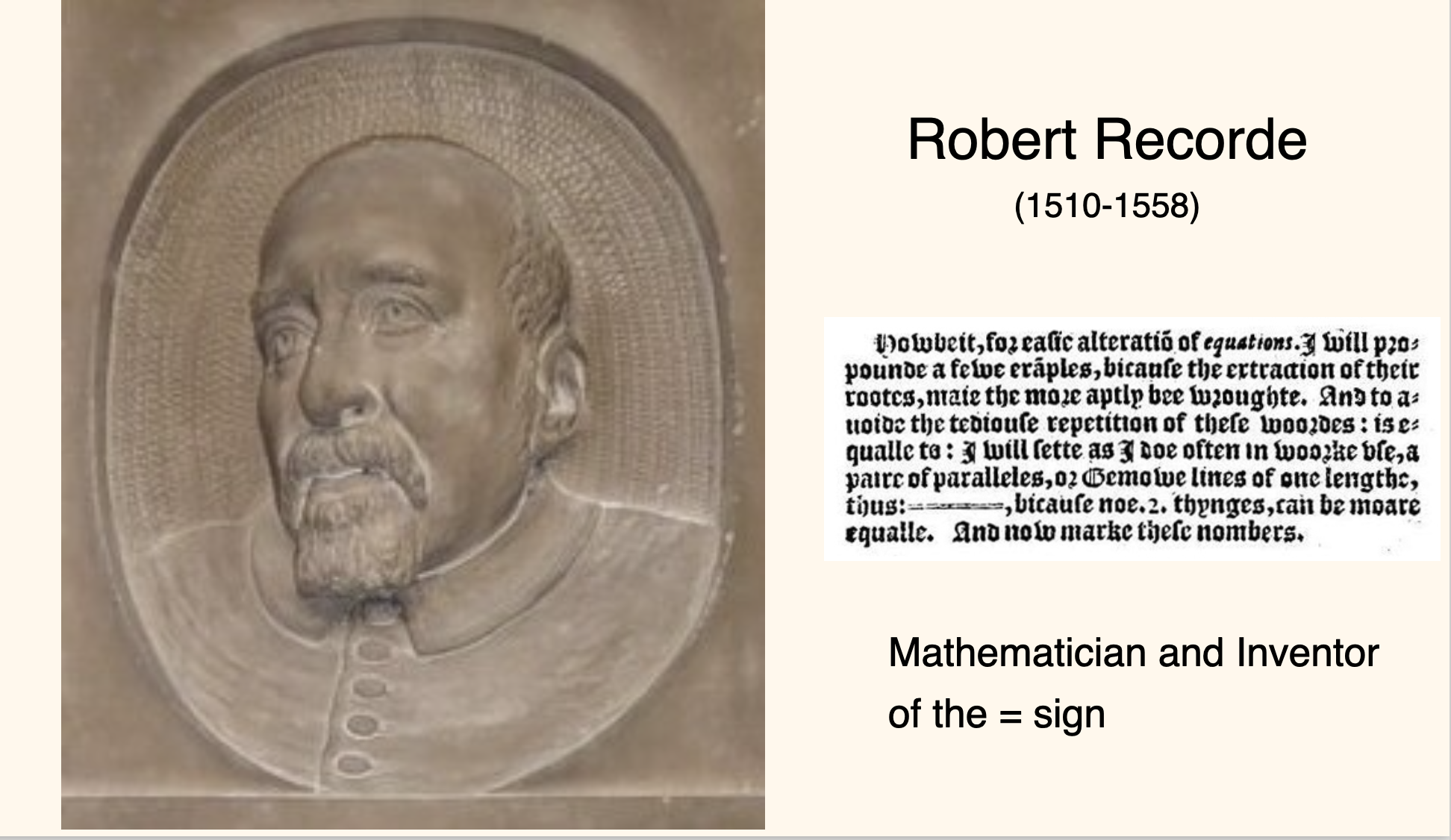ON THIS DAY: 7? June, 1558 – Robert Recorde, the man who invented the mathematical equals sign (=), died in a debtors’ prison in London.
Recorde was born in Tenby, He earned his degree at Oxford in 1531 and went on to teach mathematics there as well as at Cambridge. At some point, he began studying medicine and received his medical degree in 1545. He later served as physician to King Edward VI (the son of Henry VIII) and then to Queen Mary I (known because of her persecutions of Protestants as ‘Bloody Mary’). Recorde himself seems to have been a devout Protestant.
Not only was Recorde a physician, but he also played a foundational role in establishing the English school of mathematics. However, he wrote in the vernacular—that is, in English rather than Latin—which may explain why his influence on the European continent was limited.
Recorde dedicated his first book, The Grounde of Artes (1541), a mathematical treatise with commercial applications, to Edward VI. It was in his book The Whetstone of Witte (1557) that the mathematical equals sign first appeared. The symbol, devised to avoid the repetitive phrase ‘is equal to,’ was not universally adopted until nearly a century later.
‘Will sette as I doe often in work use, a pair of parallels, or Gemowe [twin] lines of one length, thus: =, bicause noe 2. thynges, can be moare equalle.’
Recorde was less successful with other attempted innovations. He tried to replace the Latin word pentagon with ‘cinkeangle’ and hexagon with ‘siseangle’.
So how did Recorde end up in a debtors’ prison? He was appointed by Edward VI as one of the commissioners investigating the Bristol Mint. After William Sharington, the under-treasurer, was sent to the Tower of London, Recorde was appointed comptroller in 1549. However, due to internal disagreements, the Mint was shut down in October of that same year. Despite opposing the king in this dispute, Recorde was appointed in 1551 as Surveyor of the Mines and Moneys in Ireland. He was tasked with overseeing the Dublin Mint and developing the silver mines in Wexford.
Unfortunately, the mining efforts failed. Recorde was recalled and later clashed with Sir William Herbert, the Earl of Pembroke. Recorde sued Herbert, but the Earl retaliated with a libel suit and won. Recorde was ordered to pay £1,000 in damages—a sum he could ill afford. As a result, he was sent to debtors’ prison, where he died in the month of June 1558, possibly on the 7th day.
Much of Recorde’s personal life remains a mystery. It is not known if he married or fathered children.

